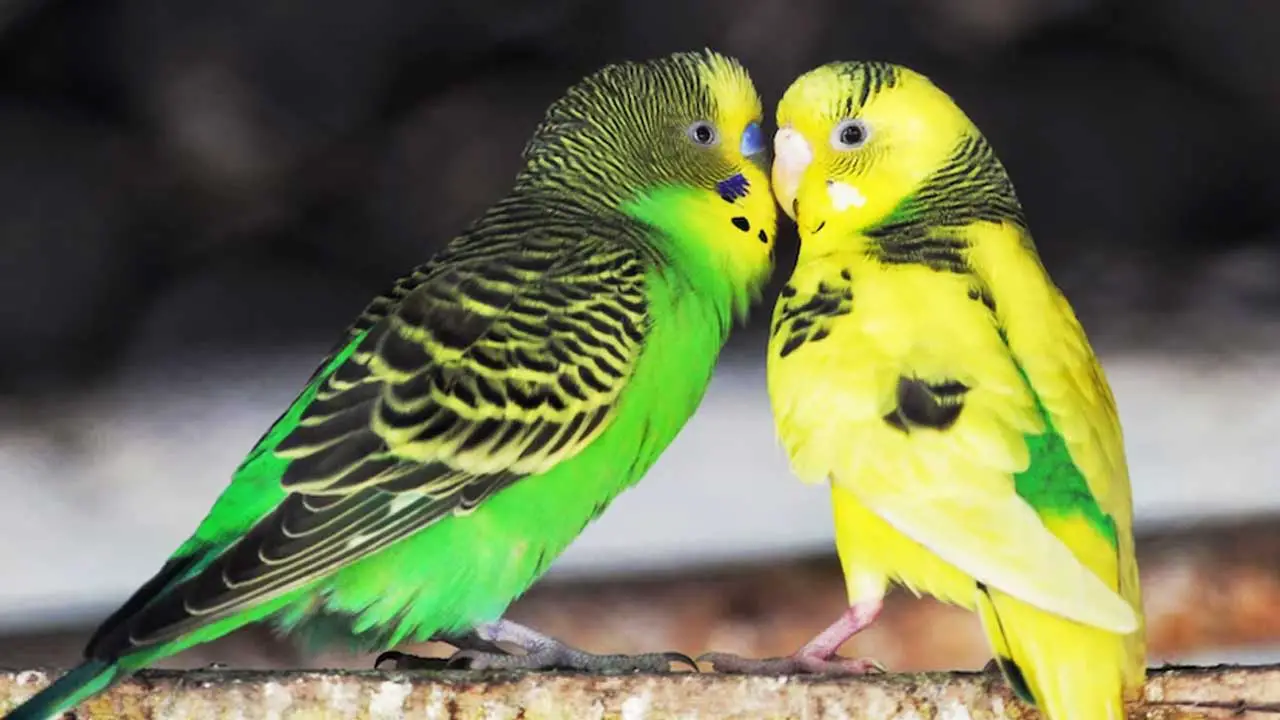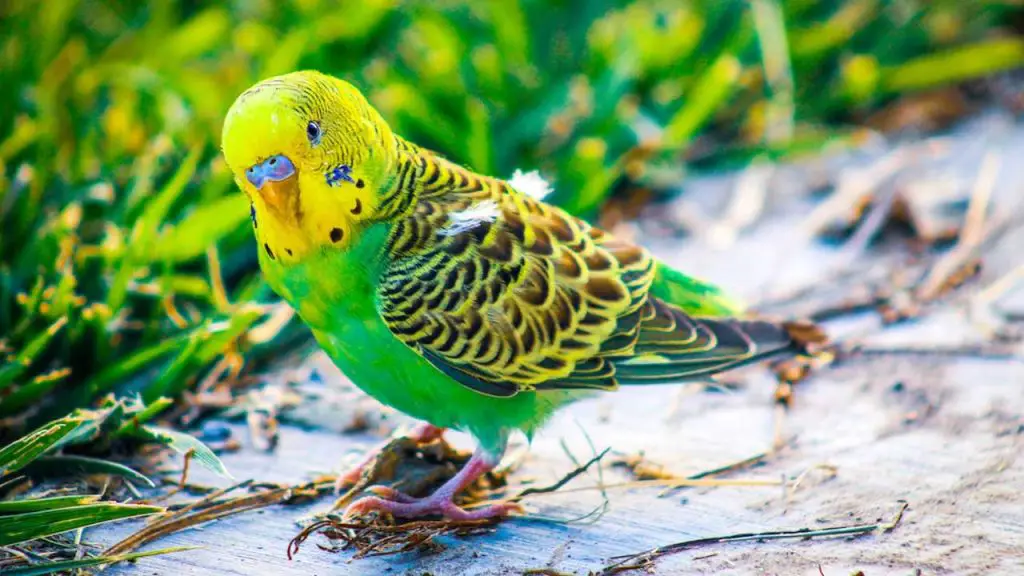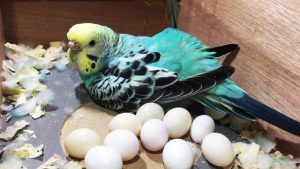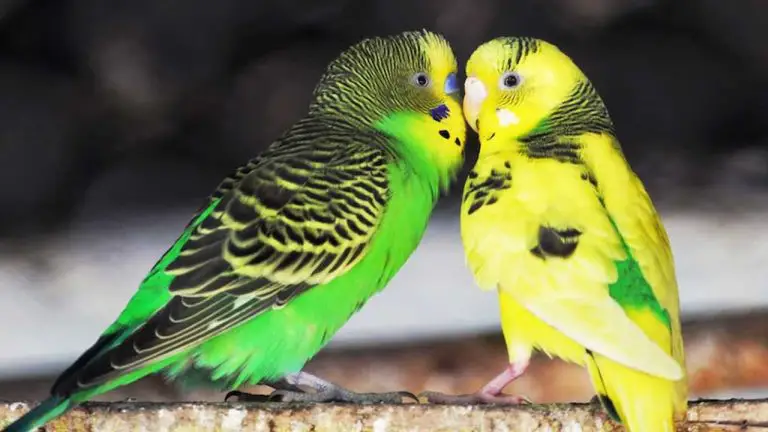Are Parakeets Easy to Train? A Comprehensive Guide

Parakeets are one of the most popular pet birds in the world, known for their vibrant colors and playful personalities. Many people are drawn to these birds because of their intelligence and ability to learn tricks and mimic sounds. However, some potential owners may wonder if parakeets are easy to train.
My Experience
In my experience, parakeets can be trained with patience and consistency. These birds are quick learners and can be taught a variety of tricks, such as stepping up onto a finger, playing with toys, and even talking.
However, it is important to remember that each bird is unique and may have their own learning pace and preferences.
Some parakeets may take longer to learn certain tricks or may not be interested in learning at all. It is also important to note that training requires a lot of time and effort, and consistency is key to success.
Table of Contents
Training Parakeets
Basic Training
When it comes to training parakeets, the first thing to keep in mind is patience. Parakeets are intelligent birds, but they also have a mind of their own. It’s important to start with basic training and gradually move on to advanced training.
One of the first things you can do is to hand-tame your parakeet. This involves getting your bird used to your hand and building trust. Start by placing your hand in the cage and letting your bird get used to it. Once your bird is comfortable with your hand, you can start offering treats and rewards.
Another basic training technique is teaching your parakeet to step up. This involves getting your bird to step onto your finger or hand when you offer it. Start by placing your hand near your bird and saying “step up” in a clear, firm voice. You can also use a treat to encourage your bird to step onto your hand.

Advanced Training
Once your parakeet is comfortable with basic training, you can move on to more advanced training techniques. One of these is teaching your bird to do tricks. Parakeets are capable of learning a variety of tricks, such as waving, playing dead, and even retrieving objects.
Another advanced training technique is teaching your bird to follow a routine. This involves getting your bird to do certain behaviors at specific times of the day. For example, you can train your bird to go to bed at a certain time or to come out of its cage at a specific time each day.
When training your parakeet, it’s important to use positive reinforcement. This means rewarding your bird for good behavior with treats, affection, or praise. It’s also important to be consistent in your training and to avoid making exaggerated or false claims about what your bird can do.
Overall, training parakeets can be a rewarding experience for both you and your bird. With patience, persistence, and a little bit of creativity, you can teach your parakeet a variety of behaviors and tricks.
Parakeet Behavior
As a bird owner, I have found that parakeets are generally sociable and friendly pets. However, their behavior can be influenced by a variety of factors, including their upbringing, environment, and individual personalities.
Socialization
Parakeets are sociable birds and thrive on affection and company. If they are not given enough attention or socialization, they may become withdrawn or aggressive. It is important to spend time with your parakeet every day, talking to them and playing with them. Hand-tamed parakeets are generally more sociable than those that have not been handled regularly.
Flying
Parakeets are active birds and require plenty of space to fly. They should be allowed out of their cage for at least a few hours every day to stretch their wings and exercise. It is important to provide a safe and secure environment for your parakeet to fly in, away from potential hazards such as open windows or other pets.
Talking
While parakeets are not as well-known for their talking abilities as macaws or lovebirds, they are still intelligent birds that can learn to mimic words and phrases with enough training and patience. Some parakeets may be more talkative than others, and it is important to remember that not all parakeets will learn to talk.
In addition to these behaviors, parakeets may also exhibit certain habits such as screams or excessive preening of their plumage. These behaviors can be normal for parakeets, but if they become excessive or problematic, it may be a sign of an underlying issue that should be addressed by a veterinarian or bird behavior specialist.
Overall, parakeets can make wonderful pets for bird owners who are willing to provide them with the attention, socialization, and space they need to thrive.
Conclusion
In my experience, parakeets can be relatively easy to train. With patience, consistency, and positive reinforcement, these birds can learn a variety of tricks and behaviors.
One of the keys to successful training is to start with simple tasks and gradually increase the difficulty level. For example, teaching a parakeet to step onto your finger can be a good starting point. Once they have mastered this, you can move on to more complex tasks like teaching them to fly to a specific perch or perform a particular trick.
Another important factor is to use positive reinforcement techniques, such as offering treats or praise when the bird performs the desired behavior. This helps to build a positive association with the training process and encourages the bird to continue learning.
It is also important to keep training sessions short and frequent, rather than trying to cram in a lot of training at once. This helps to keep the bird engaged and focused, and prevents them from becoming overwhelmed or frustrated.
Overall, while there may be some individual variation in how easy it is to train a parakeet, with the right approach and techniques, most birds can learn a variety of tricks and behaviors.
Frequently Asked Questions
How to train a parakeet to be held
Training a parakeet to be held requires patience and consistency. Start by offering your hand near your bird’s cage and letting them get used to your presence.
Once your bird is comfortable with your hand, slowly move your hand closer to them until they step onto it. Reward your bird with a treat and praise when they step onto your hand. Repeat this process daily until your bird is comfortable being held.
How to train a parakeet to talk
Parakeets are known for their ability to mimic human speech. To train your parakeet to talk, start by repeating simple phrases to them daily.
Use positive reinforcement by offering treats and praise when your bird repeats the phrase back to you. Be patient and consistent with your training, as it may take several weeks or months for your bird to start talking.
How to train a parakeet to fly to you
Training your parakeet to fly to you requires building trust and a strong bond with your bird. Start by offering your hand near your bird and letting them get used to your presence.
Once your bird is comfortable with your hand, offer a treat and call their name. As your bird becomes more comfortable, move further away and call their name, encouraging them to fly to you. Reward your bird with praise and treats when they successfully fly to you.
What can you train a parakeet to do
Parakeets are intelligent birds that can be trained to do a variety of tricks and behaviors. Some common behaviors include talking, flying to you, stepping onto your hand, and playing with toys.
With patience and consistency, you can train your parakeet to do many different things.
How to train your parakeet to trust you
Building trust with your parakeet requires patience and consistency. Start by offering your hand near your bird and letting them get used to your presence. Offer treats and praise when your bird approaches your hand.
Once your bird is comfortable with your hand, slowly move your hand closer to them until they step onto it. Reward your bird with treats and praise when they step onto your hand. Repeat this process daily until your bird trusts you.
How to train a parakeet not to bite
Parakeets may bite when they feel threatened or scared. To train your parakeet not to bite, start by offering your hand near your bird and letting them get used to your presence.
Offer treats and praise when your bird approaches your hand. If your bird bites, gently remove your hand and stop offering treats. Repeat this process daily until your bird learns that biting is not acceptable behavior.










